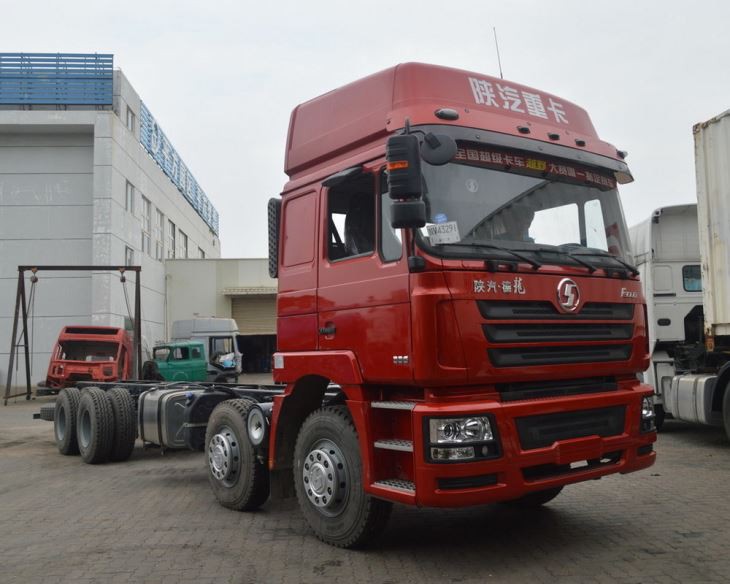Introduction
Knuckle crane trucks are essential tools for a wide array of lifting and transportation tasks in various industries, including construction, logistics, and forestry. These unique vehicles combine the functionalities of cranes and trucks, enabling them to lift, lower, and transport heavy loads with precision and ease. In this article, we will explore the features, benefits, applications, and types of knuckle crane trucks, along with practical tips and examples of their usage. By understanding these machines, operators and businesses can maximize their efficiency and safety practices.
What is a Knuckle Crane Truck?
A knuckle crane truck is a vehicle equipped with a hydraulic crane that has a knuckle or articulated boom. This design allows the crane to have a greater range of motion, enabling it to maneuver in tight spaces and lift loads to various angles. The truck serves as both a transport vehicle and a lifting solution, making it a versatile tool in many industries.
Key Components of a Knuckle Crane Truck
1. Base Truck
The base truck is typically a modified flatbed or heavy-duty truck chassis that provides the necessary power and structure to support the crane’s weight and lifting capabilities.
2. Hydraulic Crane
The hydraulic crane includes components such as the boom, hydraulic cylinders, and controls. The knuckle or articulated design of the boom allows for increased flexibility.
3. Control System
Knuckle crane trucks feature sophisticated control systems that allow operators to manipulate the crane’s movements with precision. These controls can be located on the truck or be remote-operated for convenience.
4. Stabilizers
Before operating, stabilizers are deployed to ensure the truck remains stable during lifting operations, preventing tipping and accidents.
Types of Knuckle Crane Trucks
1. Fixed Stick Knuckle Crane Trucks
These trucks have a fixed boom length and are ideal for straightforward lifting jobs where the operating range doesn’t need to change much. They are user-friendly and suitable for moderate loads.
2. Extendable Knuckle Crane Trucks
This type features a boom that can be extended for increased reach and versatility. They are particularly useful in construction settings where loads must reach high elevations or tight spaces.
3. Mini Knuckle Crane Trucks
Designed for smaller jobs, mini knuckle cranes are lightweight and compact, allowing for work in confined areas with limited access while still providing substantial lifting power.
Applications of Knuckle Crane Trucks
1. Construction Industry
In the construction sector, knuckle cranes are invaluable for lifting heavy building materials like steel beams, concrete blocks, and prefabricated structures to various heights and locations.
2. Logistics and Transportation
These trucks facilitate the loading and unloading of goods in warehouses or construction sites, making them crucial for logistics operations. Their ability to achieve precise drops enhances efficiency.
3. Forestry and Tree Care
Knuckle cranes are employed in the forestry industry for lifting and transporting large logs, branches, and other materials, allowing for safe and effective tree care operations.
4. Roadside Assistance
They also find a critical role in roadside assistance, aiding in the recovery of vehicles and transporting them safely to repair locations.
Advantages of Using Knuckle Crane Trucks
1. Versatility
Knuckle crane trucks can perform various tasks, from lifting heavy loads to transporting materials, making them a valuable asset across multiple industries.
2. Space Efficiency
The articulated design allows for work in confined spaces where traditional cranes cannot fit, increasing usability in urban environments or tight project sites.
3. Improved Safety
Equipped with stabilizers and precise control systems, knuckle crane trucks enhance safety for operators by minimizing the risk of accidents during lifting operations.
4. Time-Saving
By combining transportation and lifting functions into one machine, knuckle crane trucks help to reduce the time and cost of moving materials on-site.
Choosing the Right Knuckle Crane Truck
1. Assess Your Needs
Consider the type of jobs you will be performing. Will you require a compact model or a more robust truck for heavy lifting?
2. Weight Capacity
Check the maximum weight capacity you need. Different models have various limits based on their design and construction.
3. Outreach and Boom Length
The reach necessary for your projects is critical. Determine whether a fixed or extendable boom best suits your requirements.
4. Maintenance Requirements
Look into the maintenance needs of the truck. Some models require more regular servicing than others, which can affect long-term costs.
Operating a Knuckle Crane Truck: Tips for Safety and Efficiency
1. Training and Certification
Ensure all operators are properly trained and certified to operate the crane truck. This is essential for compliance and safety.
2. Pre-Operation Inspection
Conduct a thorough pre-operation inspection to check fluid levels, hydraulic lines, and the condition of the boom before use.
3. Load Limits
Always adhere to the manufacturer’s specified load limits to avoid accidents and maintain safety.
4. Use Stabilizers
Deploy stabilizers whenever lifting loads to enhance stability and prevent tipping during operations.
Frequently Asked Questions (FAQ)
1. What is the load capacity of a typical knuckle crane truck?
The load capacity varies widely depending on the model, ranging anywhere from 2,000 to over 50,000 pounds. Select a truck that matches your specific lifting requirements.
2. How much does a knuckle crane truck cost?
The cost can vary significantly based on size, features, and brand, typically ranging from $50,000 to $200,000, including considerations for new or used trucks.
3. Are knuckle crane trucks environmentally friendly?
Many modern models incorporate eco-friendly features such as low-emission engines, which help reduce their environmental impact.
4. How often should maintenance be performed on a knuckle crane truck?
Regular maintenance schedules should generally follow manufacturer recommendations, often every 250-500 operating hours or as usage dictates.
5. Can knuckle crane trucks be used in winter conditions?
Yes, but operators should take precautions. Ensure the truck and crane are suitable for cold weather, and consider using winter-grade fluids and lubricants.
6. What types of controls do knuckle crane trucks feature?
Knuckle crane trucks usually come with both manual and remote controls, giving operators flexibility in how they manage crane movements based on the specific job site conditions.





